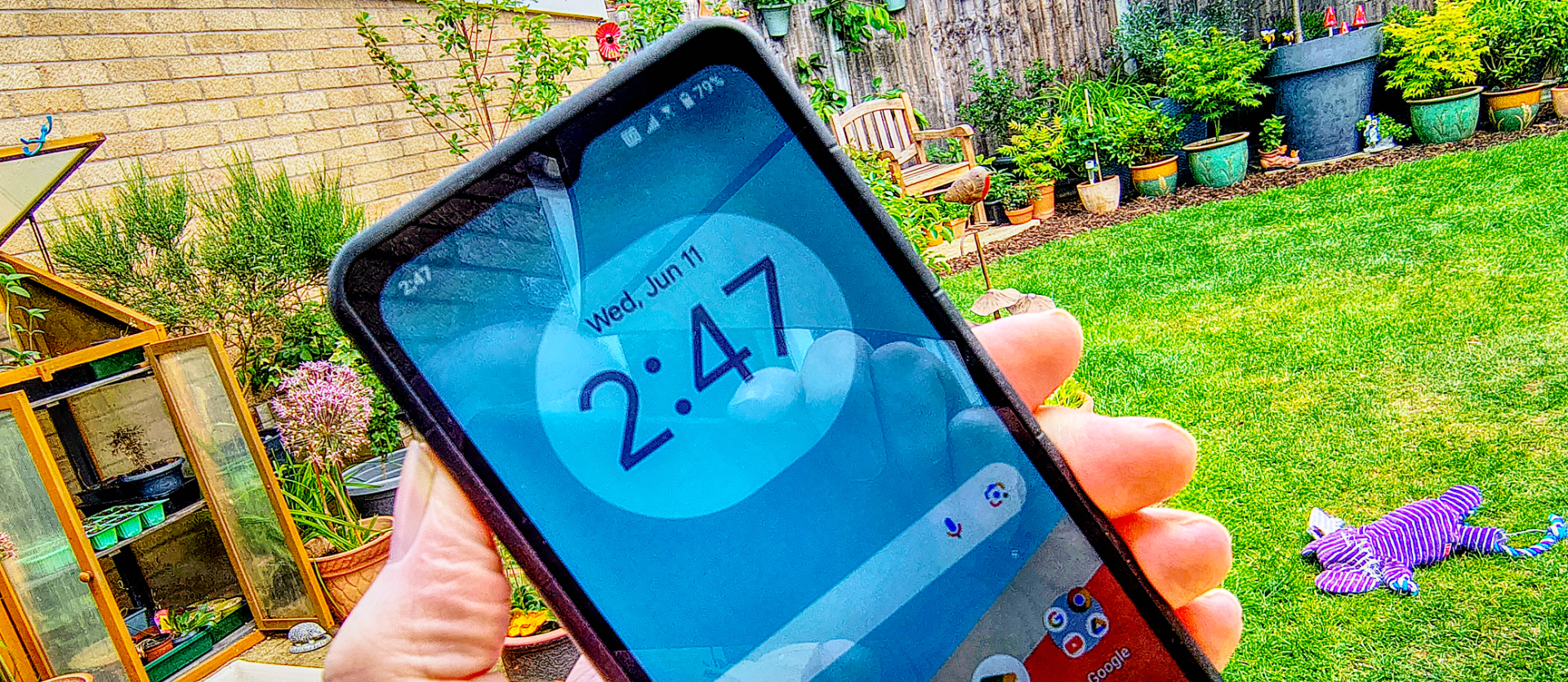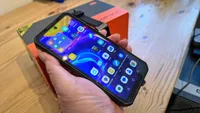TechRadar Verdict
Being different is only beneficial when there is sound reasoning behind the alternative approach. And, in some places, this phone is different for the hell of it. While I admired the tougher aspects and the powerful SoC, other features are less admirable.
Pros
- +
Powerful SoC
- +
PTT and custom buttons
- +
Exceptionally robust
Cons
- -
Only on AT&T and Verizon in the USA
- -
Odd button layout
- -
Cameras are mediocre
- -
Poor battery life
Why you can trust TechRadar
Sonim XP Pro 5G: 30-second review
For a change of pace, the Sonim XP Pro 5G wasn’t made in China but in Taiwan.
It is a rugged Android 14 smartphone built around the Qualcomm Snapdragon 7 Gen 3 SoC, making it a powerful platform for those who want to use graphically demanding applications.
This computing powerhouse is encased in an impact-resistant housing designed to withstand being dropped, submerged, and even extreme temperatures.
Where some rugged designs are problematic due to weight or size, the Sonim XP Pro is closer to a typical phone size, although weighing 277g, it’s on the heavier side. Therefore, it should easily fit into a standard jacket pocket.
The 5000 mAh battery is enough to talk for 27 hours or keep the phone on standby for over eighteen days. Though it won’t last much more than a day without needing a recharge.
These features, and many others like the camera, are run-of-the-mill for a modern Android device, but there are a few aspects where Sonim strayed from the well-worn path.
The buttons, for example, are located on the opposite side of the phone, where most people expect them. At the time of this review, this device is only available through AT&T or Verizon Business in the USA. Sonim has promised the phone will be coming to Europe this year.
Sign up to the TechRadar Pro newsletter to get all the top news, opinion, features and guidance your business needs to succeed!
But, due to the way phones are sold in the EU, having them tied to specific service providers is a non-starter for that market. Due to the limited availability and some issues around battery life, the Sonim XP Pro 5G won’t make it into our best rugged phone round-up, sadly.
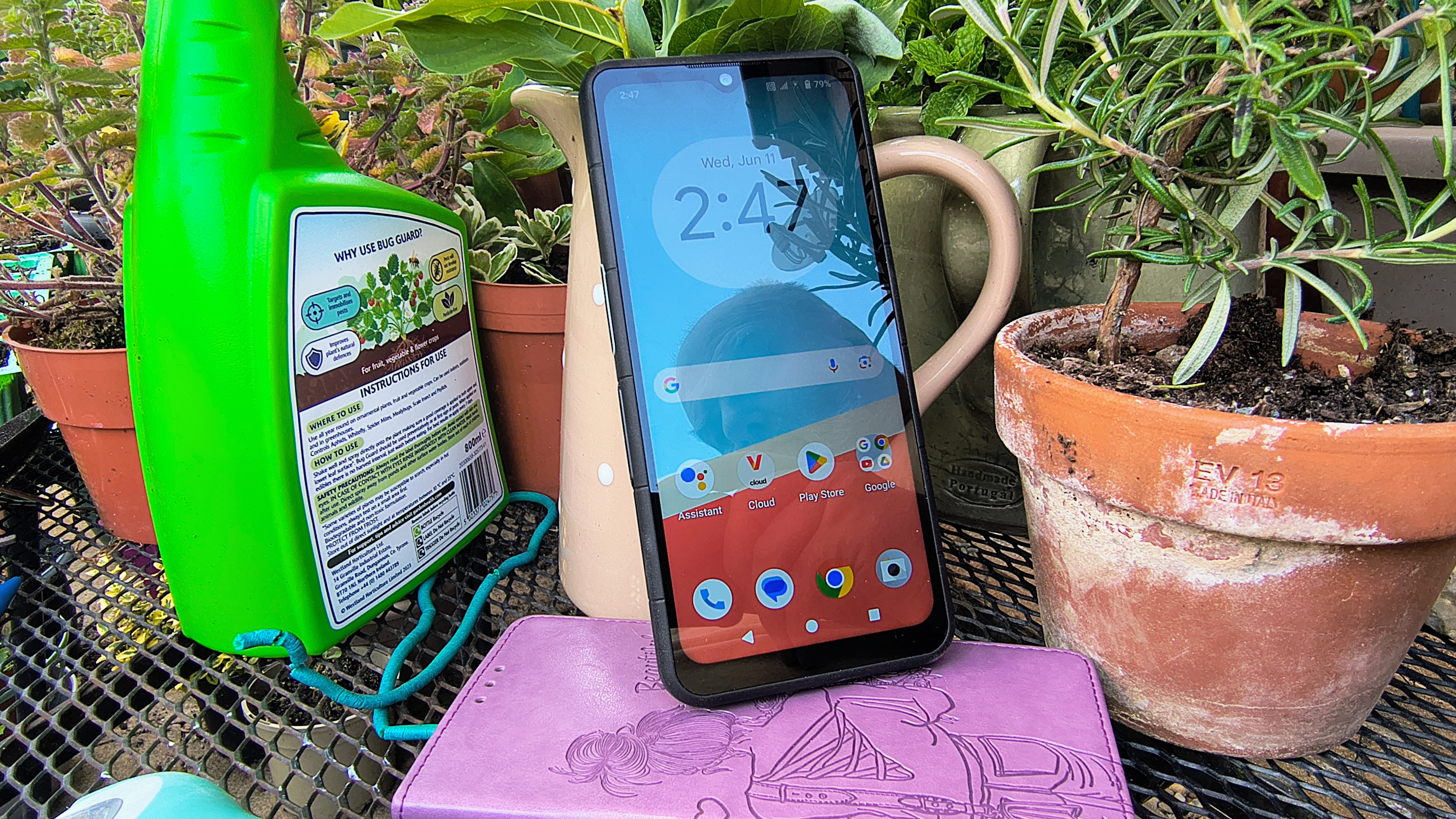
Sonim XP Pro 5G: price and availability
- How much does it cost? $430
- When is it out? Available now in the USA
- Where can you get it? Direct from AT&T or Verizon Business
Most phone makers want to sell their devices to the widest possible audience, but Sonim has currently only released the XP Pro 5G into the US market via AT&T and Verizon Business.
While the link from the Sonim website for Verizon Business is broken, the one to AT&T lists the price at either $11.95 per month or $429.99 at full retail price.
That’s probably about the level one might expect for a phone of this specification, although that doesn’t account for the extremely high price, relative to Europe and Asia, of phone service in that region.
Probably the closest generally available phone with similar features is the Samsung A56 5G, which is priced around $430 for the model with 12GB of RAM and 256GB of storage. However, that phone is described as water resistant rather than waterproof.
Hardly a bargain, but not a gouge either, the Sonim XP Pro 5G is priced to compete with brands like Samsung rather than the cheaper Chinese phone makers.
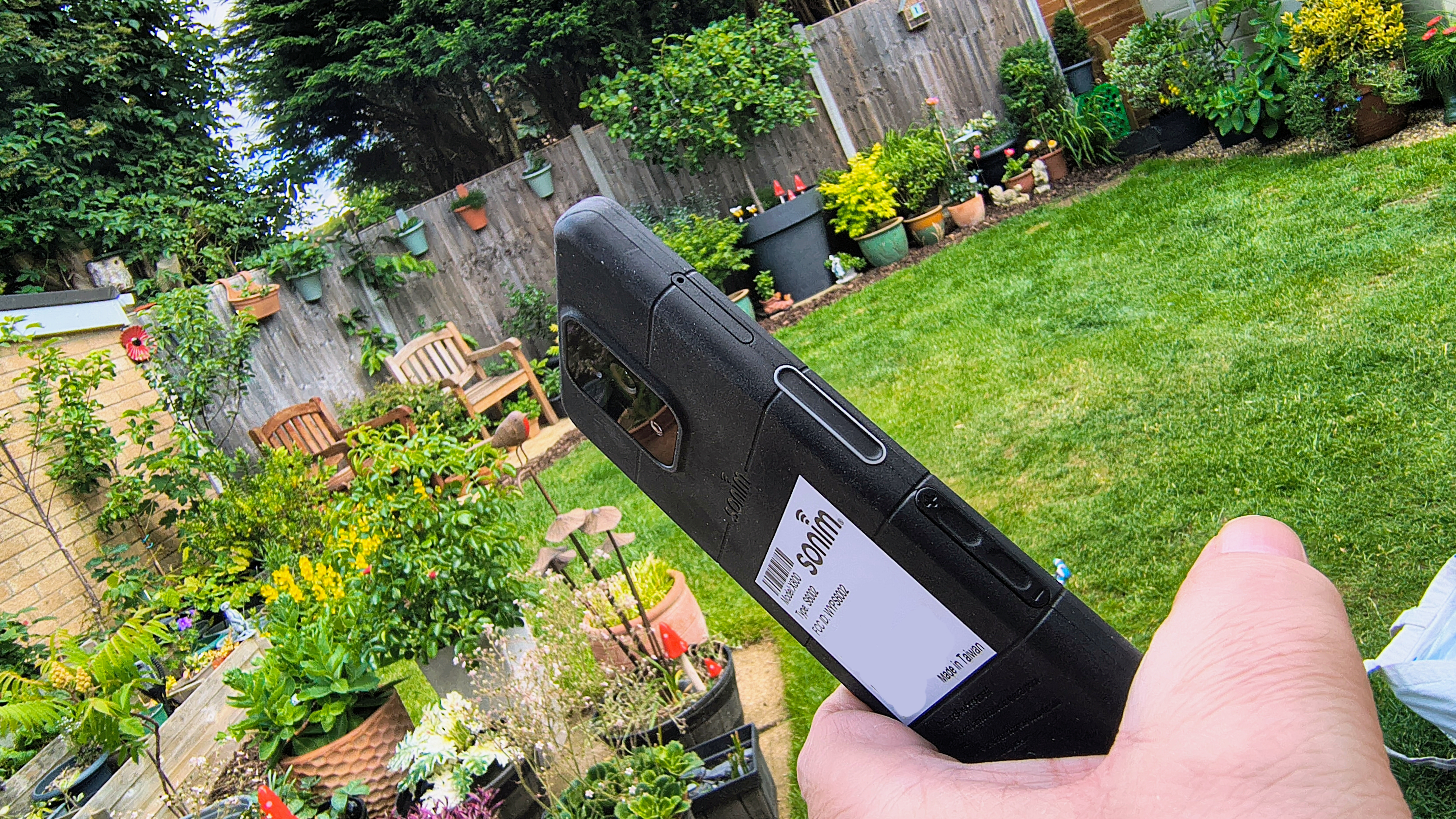
- Value score: 4/5
Sonim XP Pro 5G: Specs
Item | Spec |
|---|---|
CPU: | Qualcomm SM7550 Octa-Core (Snapdragon 7 Gen 3) |
GPU: | Qualcomm Adreno |
NPU: | Qualcomm AI Engine |
RAM: | 8GB |
Storage: | 256GB |
Screen: | 6.58-inch LCD |
Resolution: | 2408 x 1080 pixels |
SIM: | 1x Nano SIM + eSIM +2TB MicroSD |
Weight: | 277 grams |
Dimensions: | 171 x 80 x 12mm |
Rugged Spec: | Class I, Div 2, Groups A, B, C, D; Class II, Div 2, Groups F, G; Class III, Div2; MIL-STD-810H; IP68; IPX9K |
Rear cameras: | 50MP main + 13MP wide + 2MP Macro |
Front camera: | 16MP |
Networking: | WiFi 6e, Bluetooth 5.3 |
OS: | Android 14 |
Battery: | 5000 mAh 18w wired charging 10w wireless |
Colours: | Black |
Warranty: | 3 years |
Sonim XP Pro 5G: Design
- Slim and soft
- Confusing button layout
- Huge label on the back
The first thing I noticed about the Sonim XP Pro was that some phone makers like to showcase the strength of their devices with metal. With this device, except for the screen and camera cluster, everything is encased in a dense, TPU rubberised coating.
That choice makes it highly robust, rated to handle a 6.5ft drop onto concrete and submerging at the same depth for up to 60 minutes. Making it easy to handle even when it’s wet.
As this is a relatively slim shape and features the natural texture of the covering, it isn’t a phone that can easily fall out of a pocket accidentally.
Where the designers of the XP Pro entirely diverged from the expected is in the button layout, which flaunts just about every convention for these things.
Phones that don’t have the power button on the right side alongside the volume rockers are uncommon, but separating these two functions is unusual.
On this device, the power button is still on the right side, alone, and it does function as a fingerprint reader. And, the volume rocker is located on the left, where you can operate it with your thumb, alongside a Push-To-Talk button that resembles a fingerprint reader but isn’t one.
At the top of a phone is a user-customisable button that can launch whatever apps you might need, and I set mine to launch the camera.
If this seems unnecessarily confusing, then we’re on the same page. Curiously, I’ve just received a new phone design from Ulefone with the same layout, so maybe this arrangement is coming into fashion.
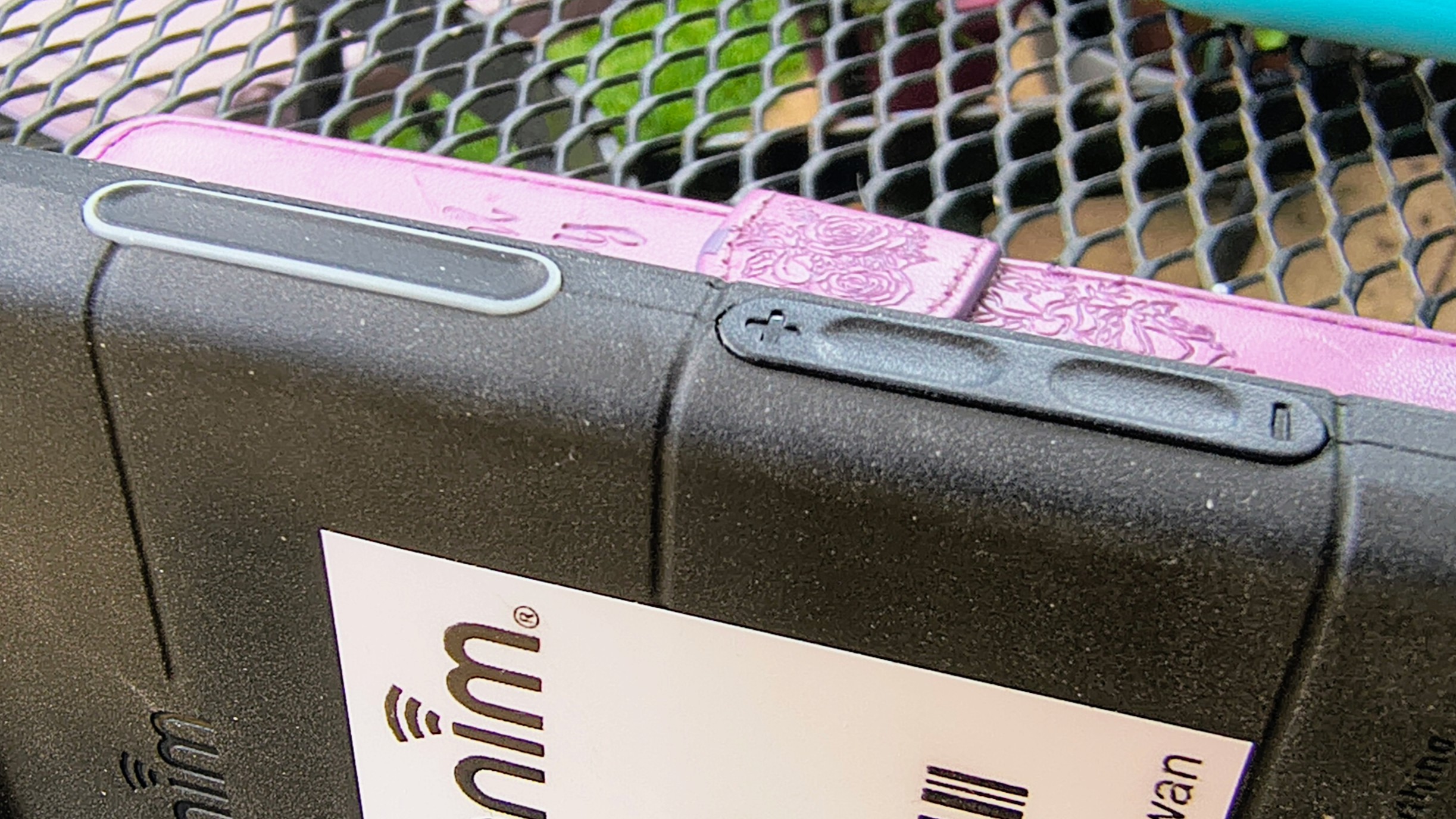
Another oddity about the external arrangements is that the SIM card slot takes only a Single SIM and a microSD card, with no provision for dumping the SD card and using two SIMs. However, it can accept an eSIM, which might mitigate this issue.
There is another feature on the right side, protected by a rubber plug, that requires two screws to be removed to gain access. This is a Sonim Secure Audio connector, an accessory for those who require secure audio connections. To make this accessible, you will need a watchmaker’s screwdriver.
The back of this phone is a combination of the good and bad aspects of phone design. What’s good is that it’s almost completely flat, with even the camera cluster hardly projecting, which is perfect for supporting wireless charging.
There are also two pogo pins on the lower section, which one can only assume will work with an as-yet-unreleased vehicle mount. But undoing all that good work is an enormous product label with three barcodes on it that few people would want to turn over a phone to find.
Overall, the Sonim XP Pro has some hits and a fair number of misses, with a few of the latter potentially being showstoppers for some potential customers.
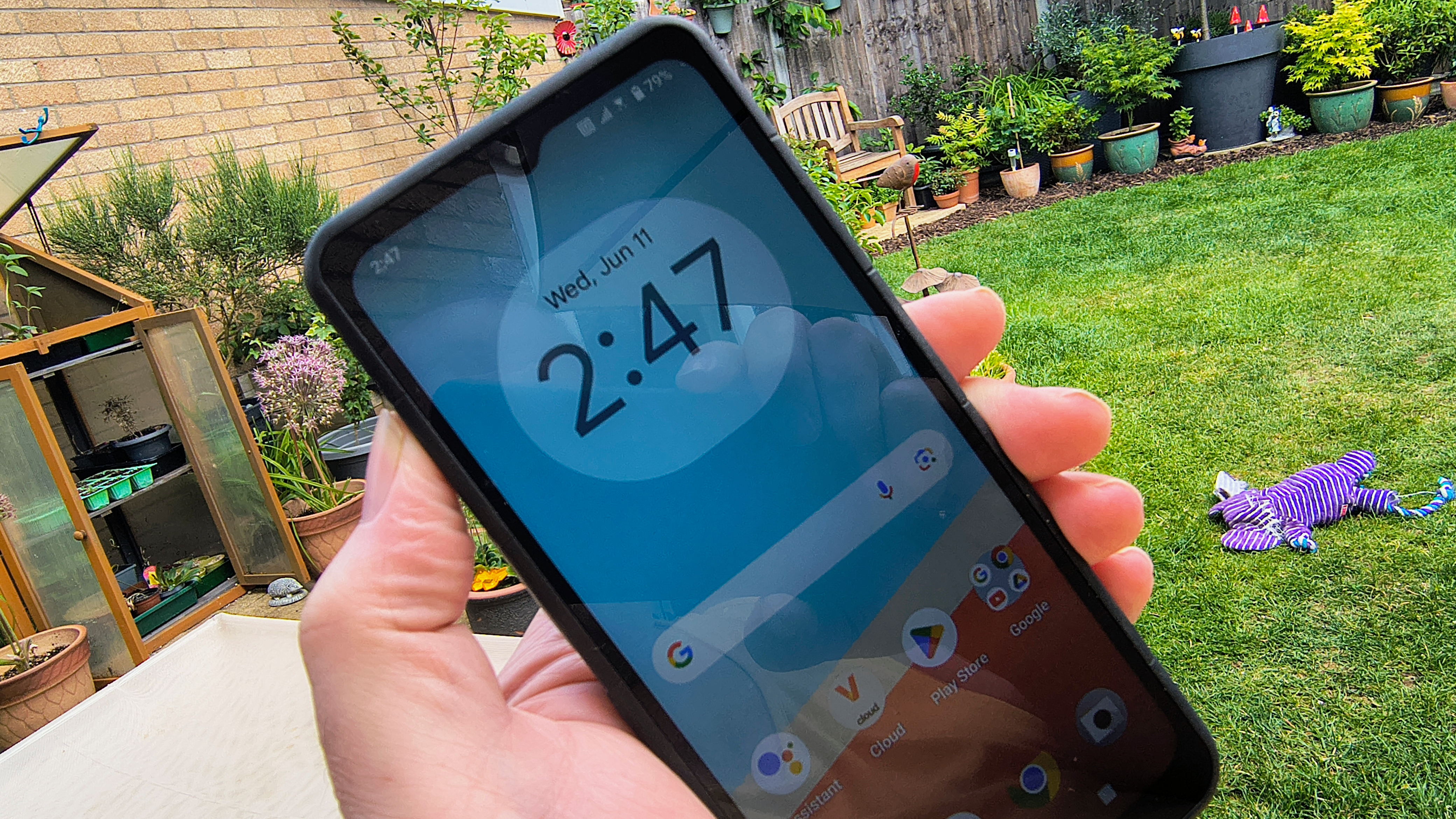
Design score: 3/5
Sonim XP Pro 5G: hardware
- Snapdragon 7 Gen 3 power
- 5000 mAh battery
- Bloatware
Not that many of the smaller phone makers are using Qualcomm SoCs, probably because they’re more expensive than the MediaTek equivalents.
The Snapdragon 7 Gen 3 is a genuinely powerful chip, using its SM7550 Octa-Core CPU alongside an Adreno GPU and the Qualcomm AI Engine.
As the benchmarks reveal, this chip combination offers significant punch, only eclipsed by things like the Samsung Exynos 1580 and the Snapdragon 8.
The only problem with such a powerful platform is that it tends to consume battery life at a more significant pace than something more modest, and with the XP Pro only having 5000 mAh of battery capacity, that’s a relevant factor here.
This isn’t the smallest rugged phone battery I’ve covered. That dubious honour goes to the Motorola ThinkPhone 25, which has only 4310 mAh. However, it’s on the lower end of the battery capacity spectrum, and I’ve tested phones with more capacity that weighed less.
The supplied charger is only rated to 18W, the maximum charging capacity over wire, and it can recharge from zero in around 100 minutes. Although undocumented regarding its performance, I found that the wireless charging was 10W, approximately doubling the time required for a full charge.
While technically not hardware, one of the features of this design is SonimWare. To quote the Sonim promotional blurb SonimWare is “SonimWare simplifies device management and configuration and reduces support costs with an entire suite of software—productivity tools and applications”
The primary function of SonimWare is an app called Sonim Scout, which provides access to numerous call control functions, some of which are already built into Android 14. I’m not sure why Sonim feels the need to recreate these aspects and then link them to a branded cloud service, but it has.
The XP Pro I received was pre-configured for Verizon Business and came with their bloatware onboard, as well as a Verizon SIM card in the slot. Not that I made a call using it, since the nearest Verizon supporting mast is at least 3,000 miles away.
However, the V-tools included are designed to access voicemail, a call filter, Verizon’s cloud services, and push-to-talk functionality.
As a European phone user, my immediate reaction was to remove some of these invasive tools, but as the review phone appears to be locked to Verizon, that proved impossible. Why any customer would put up with being dictated to in this fashion is a mystery to me.
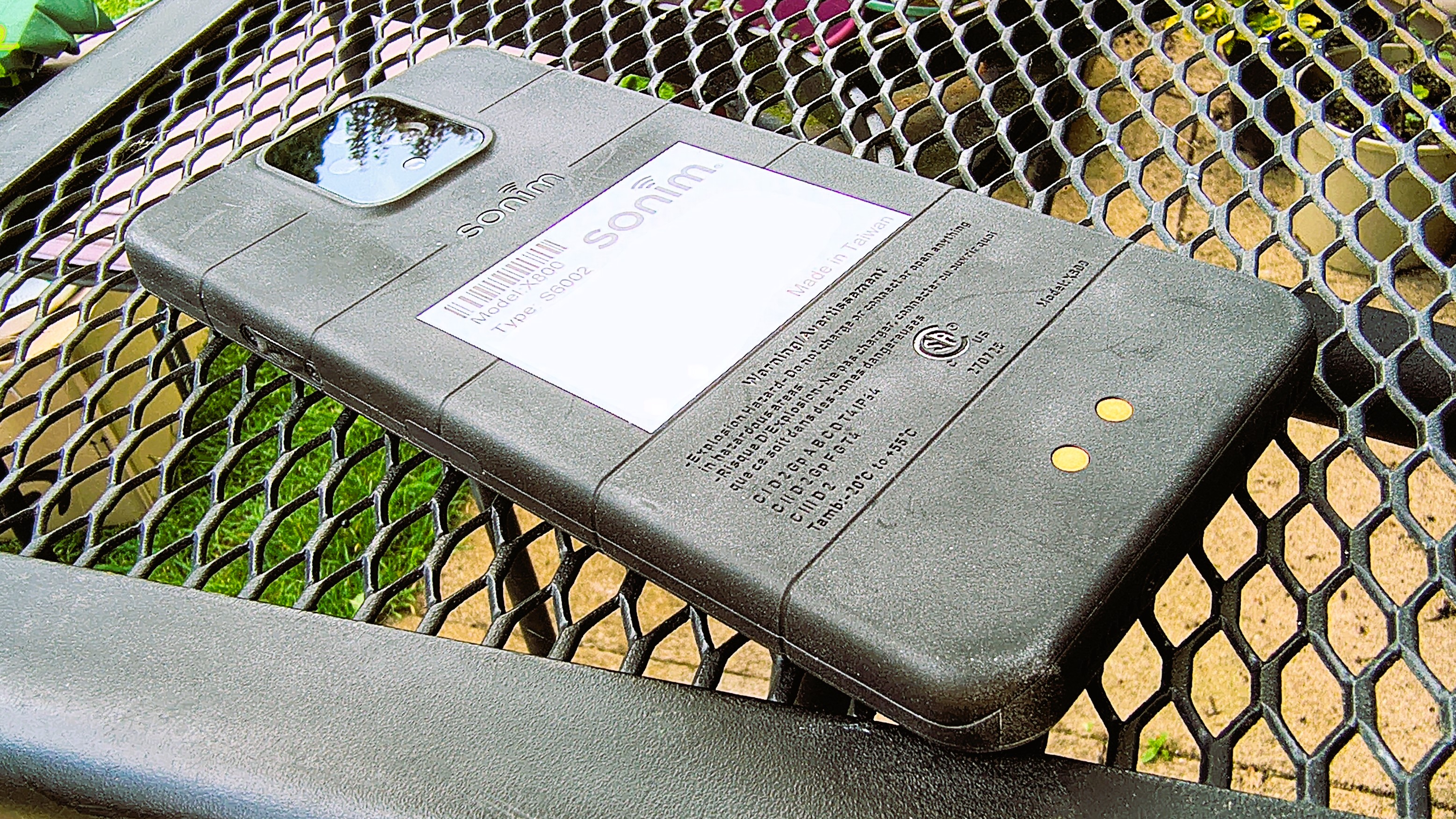
- Hardware score: 3.5/5
Sonim XP Pro 5G: cameras
- 50MP, 13MP and 2MP sensors on the rear
- 16MP on the front
- Four cameras in total
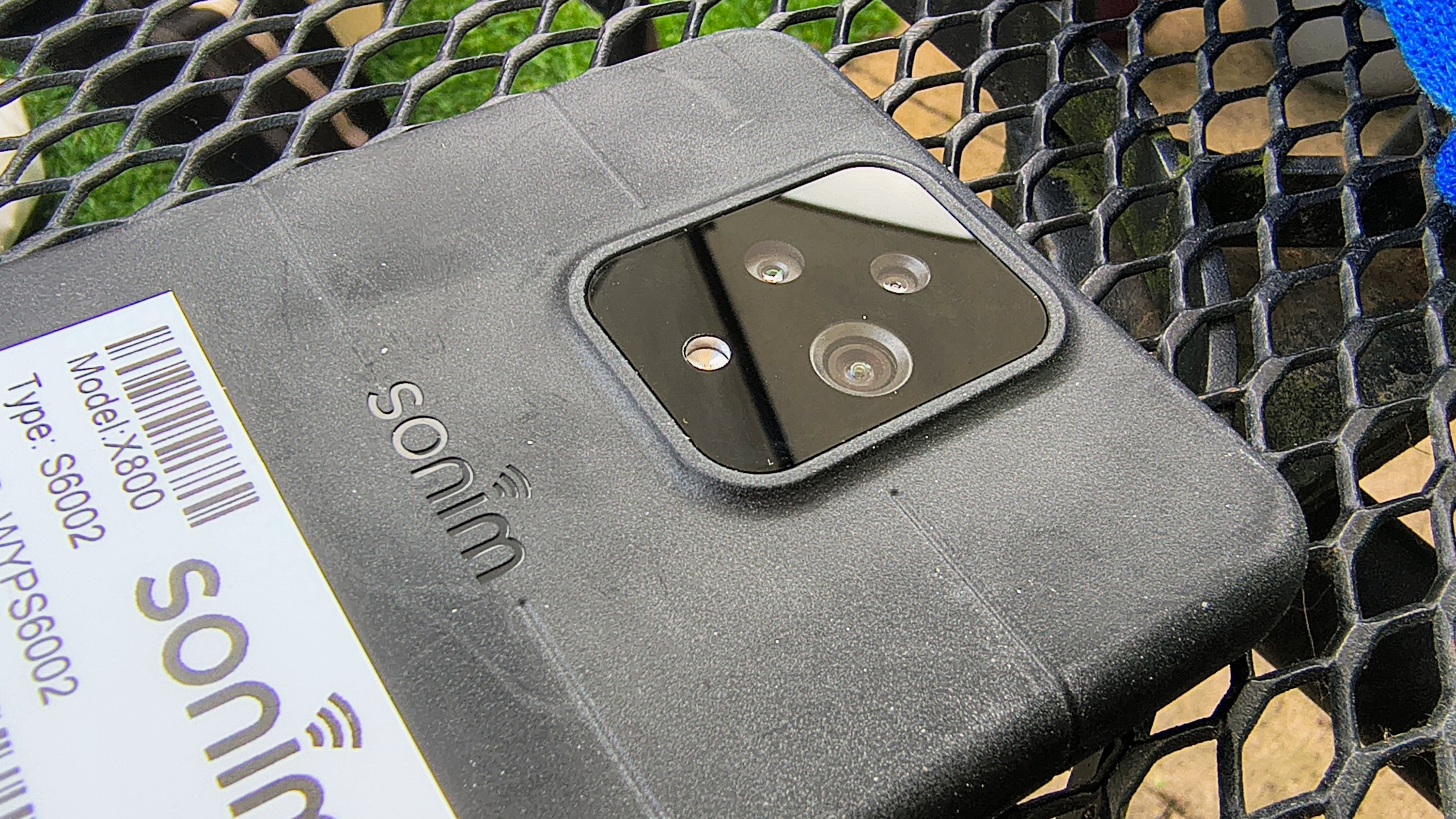
The Sonim XP Pro 5G has four cameras:
Rear camera: 108MP Samsung S5KJN1, GalaxyCore 13MP GC12A0 wide-angle, 2MP GC02M1 macro.
Front camera: 16MP GalaxyCore GC16B3
Having seen some exceptionally good camera sensors recently, the ones on the XP Pro are underwhelming at best.
The primary camera is a 50MP PDAF, but Sonim didn’t detail what sensor was used. Digging by me revealed that it’s a Samsung S5KJN1 with an f/1.9 aperture and only digital zoom. Samsung used the JN1 in entry-level phones like the A25 and A26, and by Motorola in the Moto G (2025).
To put it into perspective, the JN1 is used on the latest Ulefone Armour 33 Pro as the third sensor for ultra-wide shooting, not as the primary.
The other two sensors on the rear are both made by GalaxyCore. The 13MP GC12A0 wide-angle and the 2MP GC02M1 macro. The same brand also supplied the 16MP forward sensor, the GC16B3. None of these are remarkable by any standards, and it appears they were included purely on a cost basis.
As you can see in the picture samples, the JN1 does an adequate job of capturing reasonably sharp and generally well-exposed pictures. It will also capture 4K video, but only at 30fps, and there is no slow-motion mode at all.
Having seen the picture options that are on phones with 108MP sensors, or even the new 50MP Sony LYTIA 700C with zoom optics, the cameras on the XP Pro aren’t going to convert a maybe into a sale.
A minor benefit is that Widevine video encryption is L1, meaning you can stream Netflix or other mainstream services and expect at least 1080p resolution on this phone.
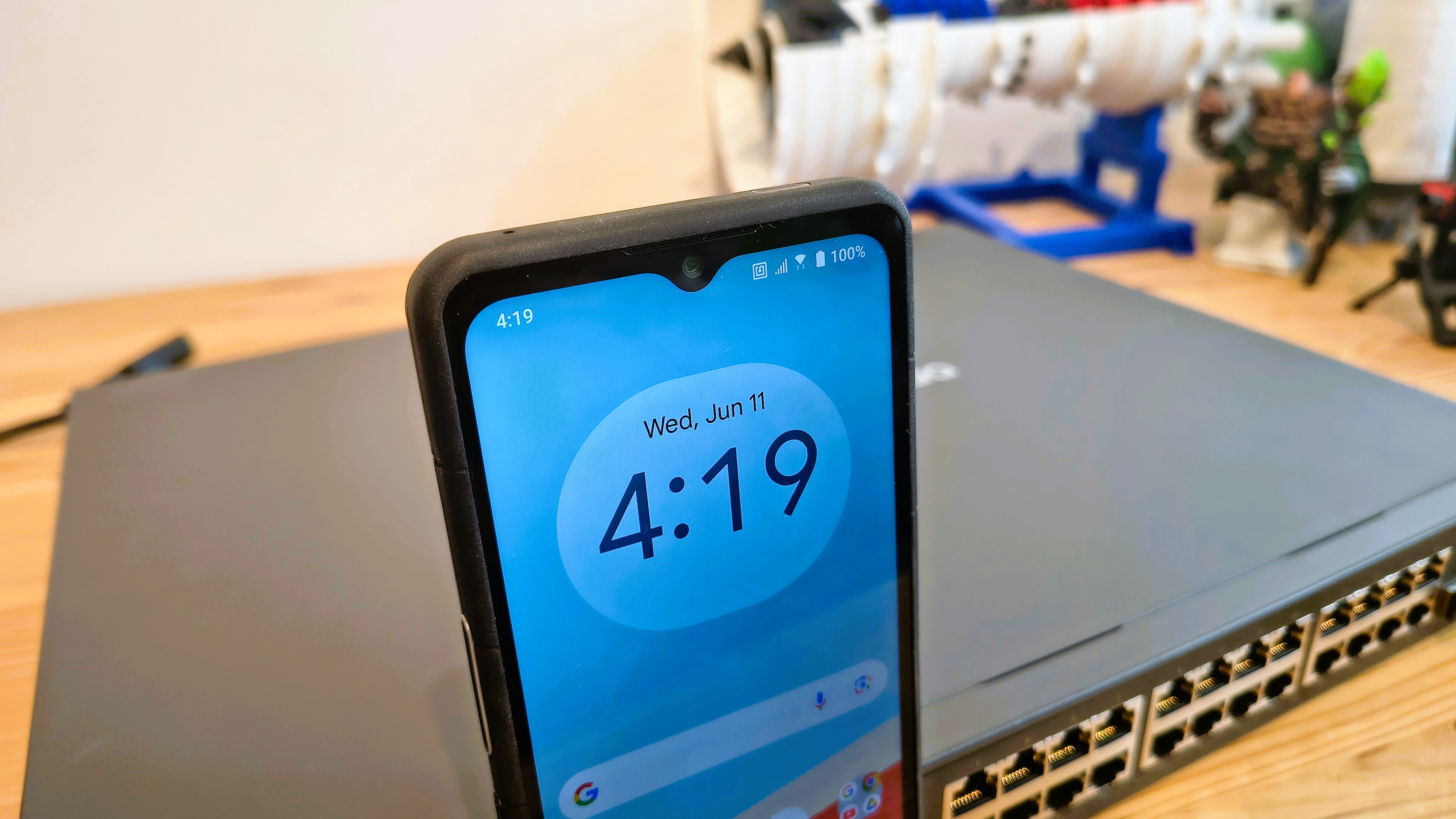
Sonim XP Pro 5G Camera samples










- Camera score: 4/5
Sonim XP Pro 5G: performance
- Powerful SoC
- GPU is game-friendly
- Battery life is poor
Phone | Header Cell - Column 1 | Sonim XP Pro 5G | Samsung A56 5G |
|---|---|---|---|
SoC | Row 0 - Cell 1 | Snapdragon 7 Gen 3 | Exynos 1580 |
GPU | Row 1 - Cell 1 | Qualcomm Adreno | Xclipse 540 |
Mem | Row 2 - Cell 1 | Qualcomm AI Engine | In GPU |
NPU | Row 3 - Cell 1 | 8GB/256GB | 8GB/256GB |
Weight | Row 4 - Cell 1 | 277g | 198g |
Battery | mAh | 5000 | 5000 |
Geekbench | Single | 1145 | 1337 |
| Row 7 - Cell 0 | Multi | 3070 | 3822 |
| Row 8 - Cell 0 | OpenCL | 3476 | 6502 |
| Row 9 - Cell 0 | Vulkan | 4031 | 6864 |
GFX | Aztec Open Normal | 56 | 56 |
| Row 11 - Cell 0 | Aztec Vulkan Norm. | 65 | 64 |
| Row 12 - Cell 0 | Car Chase | 47 | 46 |
| Row 13 - Cell 0 | Manhattan 3.1 | 82 | 82 |
PCMark | 3.0 Score | 11399 | 14287 |
| Row 15 - Cell 0 | Battery | 10h 47m | 14h 2m |
Charge 30 | % | 34 | 65 |
Passmark | Score | 14199 | 10095 |
| Row 18 - Cell 0 | CPU | 6953 | 7950 |
3DMark | Wildlife | 5400 | 5125 |
| Row 20 - Cell 0 | Nomad Lite | 490 | 642 |
In this performance presentation, I pitted the Sonim XP Pro 5G against the Samsung A56 5G, another phone designed for business users who want a powerful platform in a robust package.
If asked, most people choose a more powerful SoC over other phone features, although there are some downsides to having a great chip with a limited battery capacity.
The first takeaway is that, as impressive as the Snapdragon 7 Gen 3 is, and it’s a great SoC, it’s significantly outmatched by the Exynos 1580, which is a powerhouse.
But it’s not just about how much better it performs in benchmarks; where the Exynos 1580 truly shines is in its power efficiency.
Power use is evidently the major weakness of the Sonim XP Pro 5G, as the 5000 mAh battery is eaten at an alarming pace by the benchmark on this platform. The results are so one-sided that I’ve since concluded that either some of the bloatware on the Sonim was consuming power during the test, or some other factor was at play.
Whatever was going on, and I ran the test twice after reboots, the battery life of the XP Pro is barely sufficient to get through a single working day.
I should note that the battery life of the Samsung A56 isn’t awe-inspiring in the broader context, as the Phonemax X1 Pro lasted nearly 24 hours with only 5100 mAh of battery, admittedly with a significantly less powerful SoC.
Overall, performance for demanding apps is good, but battery life is dire.
- Performance score: 3/5
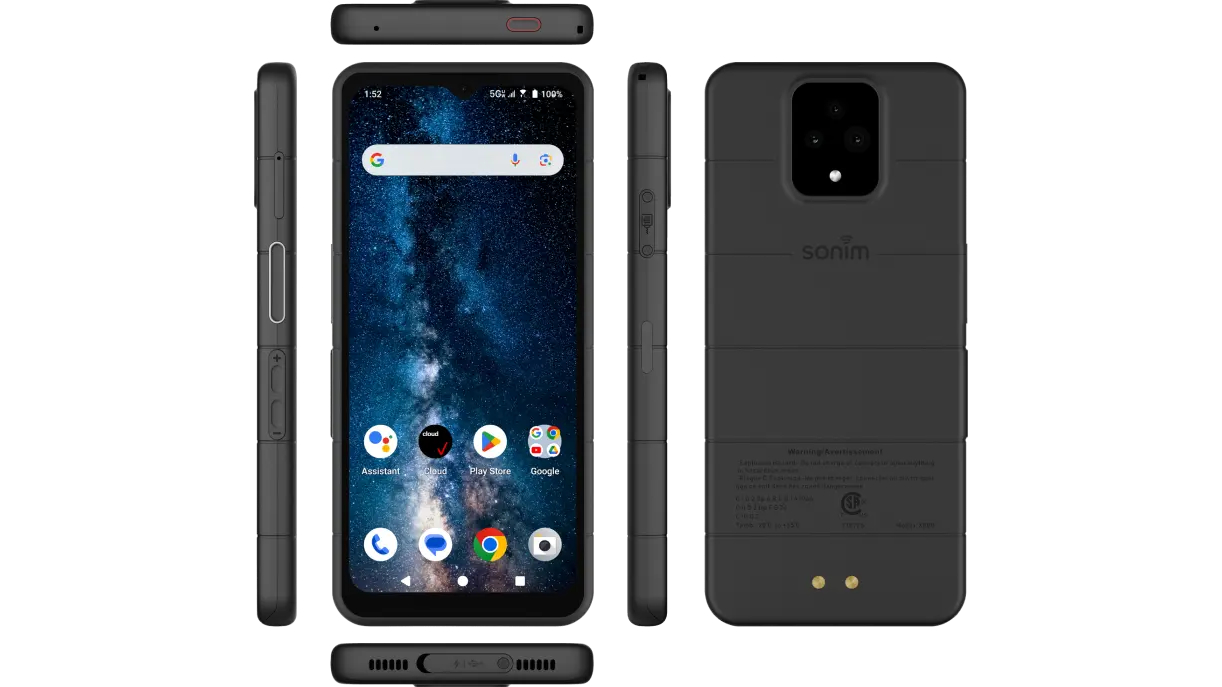
Sonim XP Pro 5G: Final verdict
It’s challenging to form a coherent view on the Sonim XP Pro, since it’s a curious combination of features that doesn’t quite hold together holistically.
On the plus side of this equation, this is a highly robust device that can withstand levels of abuse that other phones would crumble under. The screen and SoC are excellent, and it supports wireless charging.
Balancing those things is a camera selection that’s nothing special, a giant sticker that covers a third of the back, a button layout that’s never been seen by this reviewer previously (for good reason), and poor battery life.
And, making it even less compelling, it has both the maker’s software boot prints and the hooves of the approved US service provider evident on the Android installation.
I’d strongly recommend that Sonim stay far away from doing the same when they bring this device to market outside the USA, and also resolve why the platform isn’t more friendly to the battery capacity.
Should I buy a Sonim XP Pro 5G?
Attributes | Notes | Rating |
|---|---|---|
Value | About the going rate for a phone with this SoC | 4/5 |
Design | Weird button layout but a super-tough exterior | 3/5 |
Hardware | Powerful SoC, modest battery and bloatware | 3.5/5 |
Camera | Mediocre sensors without zoom optics | 3.5/5 |
Performance | Good SoC results but dire battery life | 3/5 |
Overall | A practical design that has comes with a few major flaws | 3.5/5 |
Buy it if...
You need an outdoor phone
Most brands tell you that the phone is IP68/IP69K dust/water resistant and gets MIL-STD-810H Certification. However, this one has some of the best credentials for the abuse it can withstand and its ability to operate at great depths underwater.
You use AT&T or Verizon Business
Since this phone is currently only available in the USA on two specific networks, as a customer of either, you are well-positioned. Hopefully, it will become less associated in the future.
Don't buy it if...
You need the best quality pictures
While the 50MP sensor on this phone can capture some high-quality pictures, the absence of any telephoto optics limits the photos it can take.
You need extended battery life
With only 5000 mAh of battery capacity and an SoC that uses that up disturbingly quickly, this isn’t the phone for a camping trip that lasts many days.
Also Consider
Ulefone Armor Mini 20 Pro
Another practical, rugged design with an inbuilt camping light, night vision camera and about 25% more battery capacity than the Sonim. With a less powerful SoC and a more efficient platform, the battery on this phone will last almost twice as long as the XP Pro.
Read our full Ulefone Armor Mini 20 Pro review
Oukitel WP300
A dual-display phone, but with this one, the small secondary screen is detachable and can be used as a smartwatch. It costs less than the Sonim XP Pro, but it has a larger battery that provides extended running time.
Read our full Oukitel WP300 review
For more durable devices, we've reviewed the best rugged tablets, the best rugged laptops, and the best rugged hard drives for working out in the field.
Mark is an expert on 3D printers, drones and phones. He also covers storage, including SSDs, NAS drives and portable hard drives. He started writing in 1986 and has contributed to MicroMart, PC Format, 3D World, among others.
You must confirm your public display name before commenting
Please logout and then login again, you will then be prompted to enter your display name.
